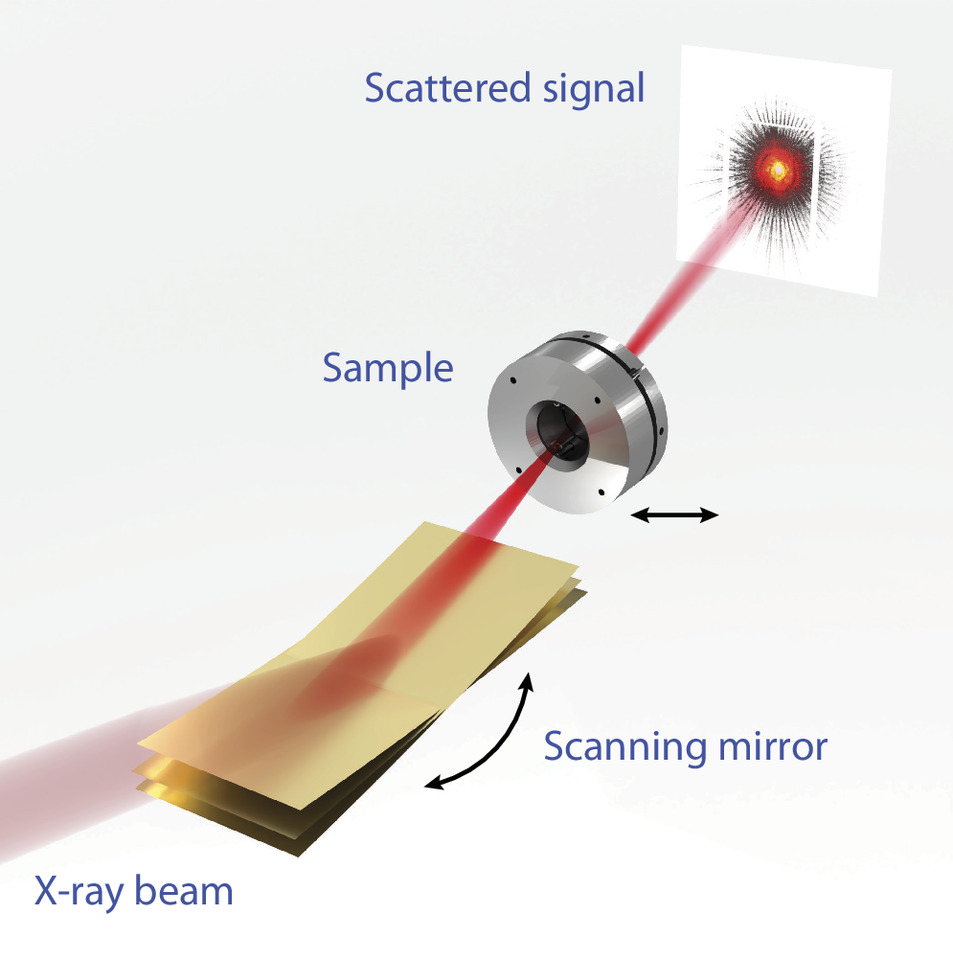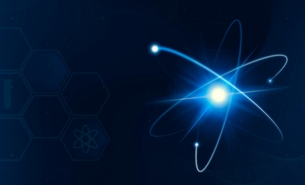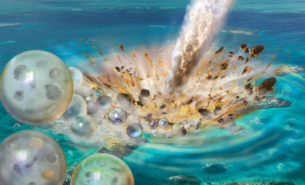Think differently, or in some cases, look at the problem from an entirely new angle. An international research group from PETRA III synchrotron in Germany and MAX IV has developed a new method for the scanning lens-less imaging technique known as ptychography. The system is designed for various sample environments, in situ and in operando conditions, and is portable, enabling usage at different beamlines or synchrotrons.
High-resolution scanning imaging measurements are conventionally made by precisely moving a sample in a focused X-ray beam. In this study, researchers at PETRA III successfully scanned the beam across an iron sample by tilting the reflective optics. The sample melted and oxidized under 50 gigapascals of pressure inside a diamond anvil cell (DAC), a type of bulky sample environment.

Widespread adoption of X-ray ptychography for in situ and in operando measurements at synchrotrons has previously faced major challenges, including a low number of coherent photons available for scanning thick samples, and control and stability of the sample position in heavy or bulk environments.
The small number of photons can be addressed at 4th generation synchrotrons such as MAX IV, but the challenge of nanometre control of heavy samples remains. One potential solution could be use of a scanning element, such as a mirror, however this may introduce aberrations to the beam. Another challenge is determining the exact place where the beam hits the sample.
Explore research opportunities with ptychography at MAX IV beamlines NanoMAX and SoftiMAX.
Beam test
Inspiration for the new modality came from a research project initiated by a collaboration with ZEISS. This project aimed to expand the applicability of a prototype for an adaptive deformable mirror for lithography machines, correcting aberrations in mirrors for 13.5 nm EUV radiation.
“We were aiming to build a special setup to correct dynamically X-ray aberrations, and as a prototype, we built a scanning beam setup as a testbed, as it is a perfect case study due to the aforementioned challenges. However, we went too far in improving it, which eliminated the need to correct aberrations and achieve unexpectedly good resolution from the outset,” said Mikhail Lyubomirskiy, MAX IV senior coherent imaging expert, who led the study.
The new beam scanning method holds potential for improvements in many areas. This study applied the method to phase contrast imaging – ptychography. Other contrast techniques possible to combine include fluorescence, X-ray diffraction (XRD), and secondary electrons.
“Beam scanning X-ray microscopy opens up an avenue for dynamic process studies that were not feasible so far. For example, an industry-scale chemical reactions in operando, where bulky and heavy chambers are used. Or, as we demonstrated with high pressures, it is possible to see what is happening inside a not-so-lightweight DAC (400g), or even a large-volume press (a few tons),” explained Lyubomirskiy. “Another direction is high-speed processes, where 4th generation synchrotrons will improve it since more usable photons will be available, such as with MAX 4U. Those experiments involve operando study of power electronics failure, additive manufacturing or processes where the sample cannot be fixed, such as biological samples under cryojet or in liquid.”
To fully realize the new modality for ptychography will also demand something more from the science community—a new approach to data processing for new experimental geometry, which requires a completely new data pipeline.




